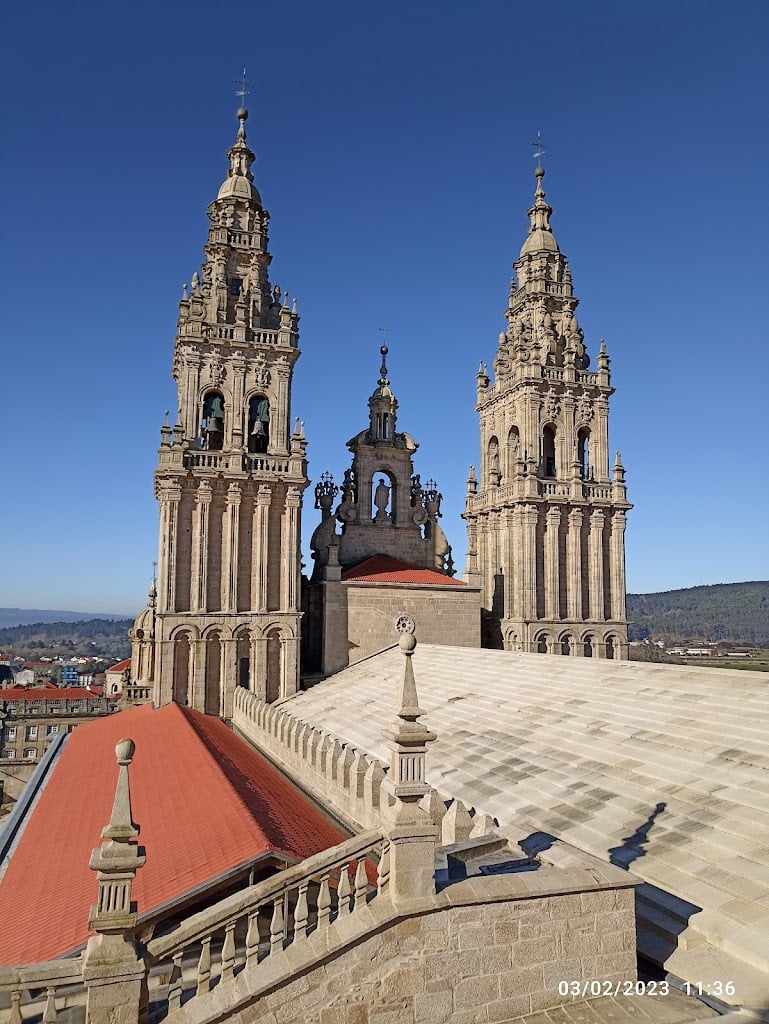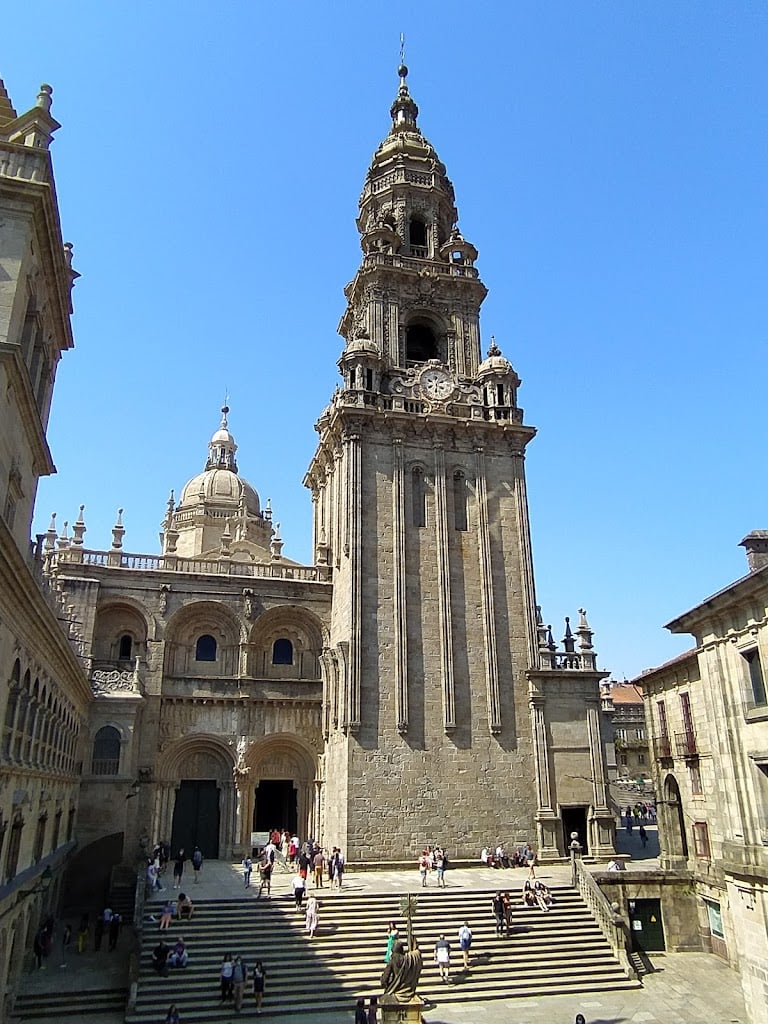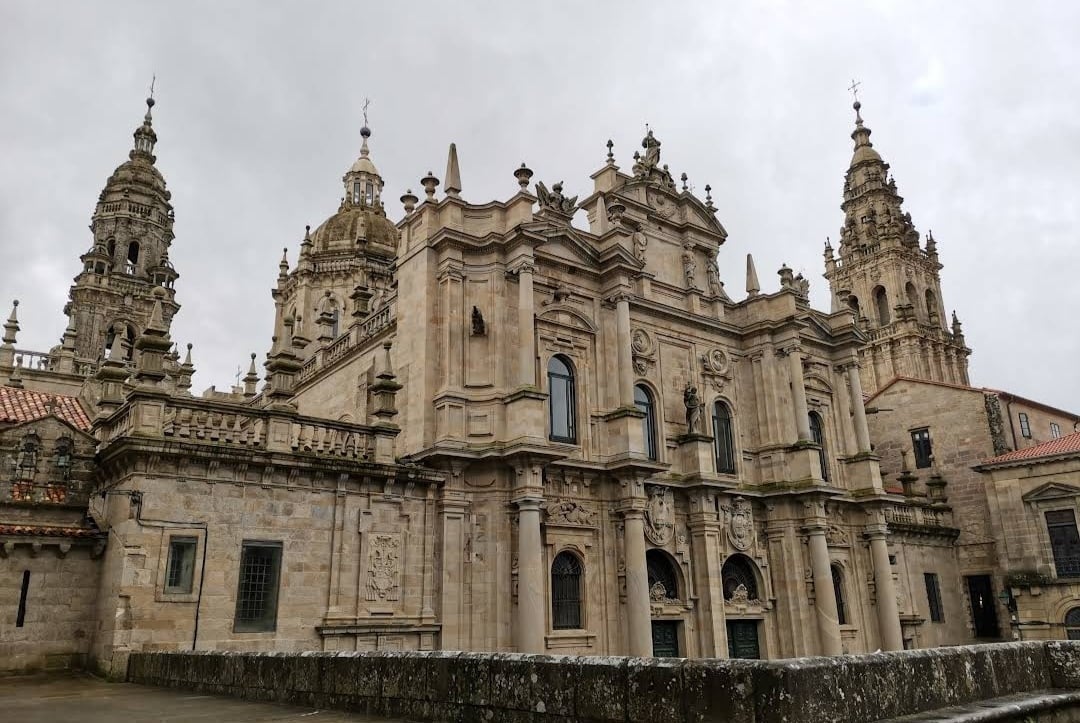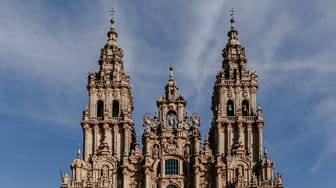Cathedral of Santiago de Compostela





Ask ThatchGPT
Suggest a local expert to plan my trip
Suggest an unique itinerary for my Santiago de Compostela trip
What foods do Santiago de Compostela locals eat
What are some true hidden gems in Santiago de Compostela
Help me brainstorm trip ideas for Santiago de Compostela
Help me plan a family-friendly trip to Santiago de Compostela
What people say
Pedro Pereira
Available for hire
"In the 9th century, Bishop Teodomiro de Iria Flavia identified a small Roman temple as the tomb of the Apostle Santiago. Following this discovery, King Alfonso II, the Chaste, ordered the construction of a modest temple around the aforementioned pagan construction. The increase in pilgrimages and a certain stability after the Arab attacks led to a new construction that began in 1075, during the reign of Alfonso VI and under the archbishopric of Diego de Peláez. Thus began the construction of the Romanesque cathedral, which continued during the archbishopric of Diego Gelmírez and would not stop until it became the great temple that we can see today.
The cathedral was built in granite ashlar covered with slabs of the same material. It is a Romanesque construction with a Latin cross plan, longitudinal arm and transept with three naves, ambulatory at the apse and a tribune that runs the entire perimeter; side chapels that are arranged in an orderly fashion throughout the temple and have a space with their own individuality; only some of the ambulatory remains from the Romanesque period.
Side naves covered with groin vaults, central nave with a cylindrical vault supported by reinforcing arches and triforium with a cylindrical quarter. The façade of the Acibechería is neoclassical (Ventura Rodríguez and Lois Monteagudo). The façade of the Praterías is Romanesque and a paradigm of medieval iconography. The Holy Door, baroque (1611), only opens on holy years. The façade of the Obradorio (Fernando Casas y Novoa, 1738-1750) is a combination of stone and glass, with the large windows in the central section standing out, among the largest before the Industrial Revolution."
Read more in:
Mentioned in these guides
About Cathedral of Santiago de Compostela
Get the inside scoop on Cathedral of Santiago de Compostela from local experts, travel creators, and tastemakers. Browse genuine trip notes, Cathedral of Santiago de Compostela reviews, photos, travel guides, and itineraries from real travelers and plan your trip with confidence.
Phone
Save this spot for later or start mapping out a new trip today
Try our AI Travel Assistant and get instant answers to any questions about your trip.
Ask ThatchGPT

